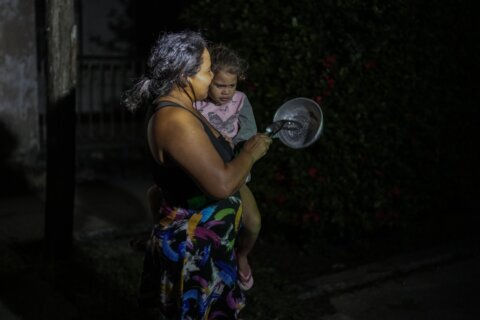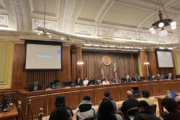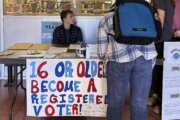WASHINGTON — The Federal Aviation Administration is struggling with making rules for what some call the Wild West world of drone flight.
Mid-Atlantic Aviation Partnership is leading the research to help the FAA develop rules that allow for safe use of drones. The partnership is composed of many organizations with an interest in drones, including the University of Maryland and Virginia Tech.
It’s one of six test sites in the nation for drones in the United States, and has approval from the FAA to do test flights of a variety of drones in Maryland, Virginia and New Jersey. It is conducting research that the FAA can use as they work to create rules for the unmanned aircraft.
“It gives them data to start looking at the rules that they’re making and seeing if there are too much, too little or whether they’ll work at all,” said Virginia Tech’s Rose Mooney, an executive director of the Mid-Atlantic Aviation Partnership.
“Our goal is to help them [the FAA] in the process of integrating UAS into the national airspace system into a safe and responsible manner,” said Jon Greene, associate director of the MAAP.
Opening a door for commercial UAS flights
Hobbyists can fly small drones — under 55 pounds — without much regulation, but commercial flights are banned. The FCC is receiving public comments on new rules, but it will still be some time before they can take effect.
“Congress has given us the ability to approve commercial operations to bridge until we get rule making done,” said Bill Crozier, acting manager of the Federal Aviation Administration’s unmanned integration office.
Mooney says drones can save lives in many ways, including delivering medicine to remote areas and sparing workers from dangerous situations such as inspecting bridges and power lines.
Law enforcement can also benefit from the aircraft, including search and recovery missions, Mooney said. In 2014, drones from Virginia Tech were used during the search for murdered UVa. student Hannah Graham.
Hobbyists need to educate themselves on drone safety
Near-misses with planes and the crash of a drone onto the White House lawn are among the scenarios involving drones that have made news. While some operators clearly knew what they were doing was wrong, others may lack the education needed to fly the aircraft safely.
It’s easy to purchase a drone online, but operators should familiarize themselves with the guidelines for drone operation approved by the FAA.
“It’s like getting that driver’s license, right? You don’t just buy a car and get in it,” Mooney said.
The FAA says it’s working to reach out and educate people who may not have done their homework before purchasing a drone.
“Those are the ones that we need to make sure that we educate, let them know what the dangers are and some of the risks are,” Crozier said.
Among the guidelines:
- Operators should not fly drones higher than 400 feet;
- Drones must stay five miles away from airports and away from manned aircraft;
- Aircraft must be kept grounded during bad weather and steered clear of power lines;
- Drones with cameras attached should not be used to conduct surveillance or photograph people in area in which an individual can expect privacy.








